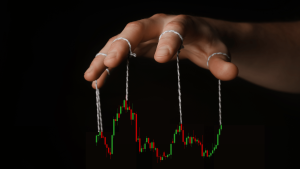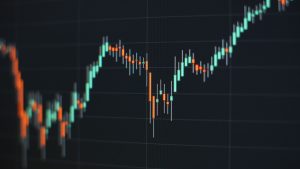The GBP/USD currency pair recently hit a 30-month high, with the British pound rallying to 1.3370 against the U.S. dollar. This significant movement can be attributed to diverging policies between the Bank of England (BoE) and the U.S. Federal Reserve, as well as other global economic factors. The divergence in central bank strategies has been a major driver in the currency markets, as traders and investors closely follow interest rate decisions and macroeconomic data. But what exactly is behind this sterling strength, and how should traders approach this evolving market?
In this blog, we’ll break down the key drivers of the GBP/USD rally, explore the impact of central bank policies, and offer strategies for traders to capitalize on these movements.
1. Central Bank Divergence: A Key Driver of Sterling’s Strength
One of the primary factors pushing the GBP/USD pair higher is the divergence in monetary policies between the Bank of England and the Federal Reserve.
Bank of England: Focus on Inflation Control
The BoE has been adopting a more hawkish stance in recent months, with inflation in the UK continuing to rise. In response to this, the central bank has been raising interest rates and signaling that further rate hikes could be necessary to combat persistent inflationary pressures. The BoE’s focus on tightening monetary policy to address inflation has made the pound more attractive to investors, who are seeking higher yields in an environment where interest rates are rising.
- Inflation in the UK: Inflation remains a major concern, prompting the BoE to act aggressively in an effort to bring it down. This has contributed to the pound’s strength as higher interest rates tend to attract foreign investment into a currency.
Federal Reserve: Cautious Approach
On the other hand, the U.S. Federal Reserve has been more cautious in its approach. While inflation is still a concern in the U.S., the Fed has been less aggressive in its rate hikes and has signaled that it may soon pause or slow the pace of its tightening. This relatively dovish stance has led to a weaker U.S. dollar, as investors expect lower yields and are shifting their focus toward other currencies like the pound.
- U.S. Dollar Weakness: The dollar has been under pressure as the Fed’s rate-hike cycle shows signs of slowing down. With traders pricing in the possibility of fewer rate hikes in the future, the dollar has lost some of its appeal, making the pound relatively stronger.
2. How GBP/USD Reached a 30-Month High
The combination of BoE tightening and Fed caution has created the perfect environment for the GBP/USD rally. Traders have been flocking to the pound as expectations grow for further rate hikes in the UK, while the U.S. dollar has weakened due to the Fed’s more dovish signals.
Market Sentiment and Economic Data
The pound’s rally to 1.3370 has also been supported by positive market sentiment toward the UK economy, coupled with strong economic data, including improving employment numbers and retail sales. Meanwhile, U.S. data has been mixed, with concerns about a possible recession still looming. The divergence in economic performance between the UK and the U.S. has further fueled the rally in GBP/USD.
Geopolitical Factors
In addition to central bank policies and economic data, geopolitical events continue to play a role in currency movements. The UK’s relative stability compared to the U.S. has also contributed to the pound’s upward momentum. Investors often seek stability during times of global uncertainty, and the UK’s current trajectory has been perceived as more favorable.
3. Strategies for Trading GBP/USD
With the GBP/USD pair reaching new highs, traders need to consider their approach carefully. Here are some strategies for navigating this market:
A. Follow Central Bank Announcements
The most significant driver of currency markets right now is central bank policy. Traders should keep a close eye on announcements from both the BoE and the Federal Reserve, as changes in tone or policy could impact the GBP/USD exchange rate. Pay attention to interest rate decisions, inflation data, and economic outlooks from central bankers.
B. Use Technical Analysis
Technical analysis can be an effective tool for trading GBP/USD. Watch for key levels of support and resistance, and use tools like moving averages and Relative Strength Index (RSI) to identify potential turning points in the market. With the pair trading at multi-month highs, it’s essential to identify whether the upward trend will continue or if a pullback is likely.
C. Manage Risk with Stop-Loss Orders
Currency markets can be highly volatile, especially when driven by central bank policies. Managing risk is crucial in this environment. Use stop-loss orders to protect your positions in case of sudden market reversals, particularly when trading around central bank announcements or economic data releases.
D. Monitor Economic Data Releases
Economic data, such as inflation reports, employment figures, and GDP growth, will continue to drive the pound and the dollar. Traders should stay informed about upcoming data releases that could shift market sentiment in either direction. Positive data from the UK could further support the pound, while weak data from the U.S. could keep the dollar under pressure.
Stay Ahead of the Markets with EPIQ Trading Floor
Navigating currency markets in times of central bank divergence can be challenging, but having the right tools and insights can give you the edge you need. At EPIQ Trading Floor, we provide real-time trading signals, expert market analysis, and a community of traders to help you succeed.
Whether you’re trading forex, crypto, or stocks, EPIQ Trading Floor offers the strategies and tools you need to stay ahead of the market.
Start your 3-day free trial today! Join EPIQ Trading Floor and get access to exclusive trading strategies, real-time market data, and expert analysis to boost your trading success.
Disclaimer
The information provided in this blog is for educational purposes only and does not constitute financial advice. Always conduct your own research before making any investment decisions.










Responses